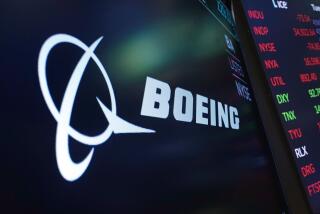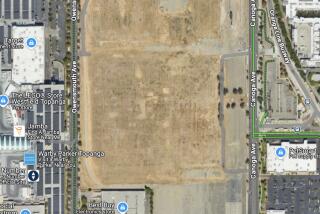Lawyers for Lockheed Workers Press Case for Damages in Injury Suit
- Share via
As a long-running chemical-exposure trial drew near a close Monday, lawyers for Lockheed workers sought millions of dollars in damages from companies that supplied chemicals used in making stealth military aircraft at Lockheed’s Burbank complex during the 1970s and 1980s.
During their closing statements in Los Angeles Superior Court, attorneys for the workers accused chemical suppliers of “despicable” conduct for allegedly failing to provide adequate warnings about the dangers of their products.
“It’s not the way you’re supposed to behave,” said attorney Thomas V. Girardi, referring to the companies--including Exxon, General Electric and DuPont--that sold Lockheed solvents, resins and epoxies used to make the stealth fighter and other military planes.
The workers were only trying “to earn a living,” Girardi told jurors. “They’re human beings and they have the right to know that this stuff causes problems.”
The closing statements drew an overflow crowd of more than 70 spectators, many of them former Lockheed workers who applauded as Girardi finished his summation.
Closing arguments by defendants began late Monday and are expected to continue at least through today before the case goes to the jury.
Now in its sixth month, the trial pits 15 current and former Lockheed workers against two dozen chemical firms. The outcome is likely to trigger settlements or trials involving pending claims by more than 600 other Lockheed workers.
Reflecting the huge stakes, both sides spent millions of dollars on expert witnesses who charged up to $600 per hour.
In their plea for damages Monday, the plaintiffs’ attorneys sought $50,000 to $75,000 for one former worker described as suffering minor problems from chemical exposure.
But they requested $1 million to $2 million for several other workers who, they said, suffered serious damage to their brains and nervous systems from chemical fumes.
The largest damage request was for $10 million for the widow and children of Ken Kosiba, who died of lung cancer while still in his 40s--allegedly a result of exposure to products containing asbestos and other cancer-causing substances.
The chemical firms contend that any injuries suffered by the workers were due to other causes. They also say they warned Lockheed about the risks of their products but the warnings were ignored.
Lockheed, which three years ago paid a near-record $1.5-million settlement to the U. S. Occupational Safety and Health Administration for violations in Burbank, was originally a defendant in the lawsuit.
But without admitting liability, the company last summer paid a multimillion-dollar settlement to be dismissed from the case. At Lockheed’s insistence, the dollar amount of the settlement has remained secret. The trial against the chemical suppliers began in August.
Girardi’s summation focused on material-safety data sheets--documents that chemical firms give customers discussing proper use of their products, including potential health risks and required safety precautions.
Citing several data sheets introduced as exhibits, Girardi said chemical firms soft-pedaled the hazards for years, failing to list the most severe risks, such as cancer, long after they were discovered.
As an example, he cited a 1981 data sheet for a General Electric product that he said summarized the effects of overexposure as “not applicable.” Subsequently--and long after workers were exposed--the data sheet included a slew of hazards, ranging from liver and kidney damage to blindness and death.
“Thanks, GE,” Girardi said mockingly. “What else can happen to you besides what is listed here?”
Girardi also cited a 1979 internal memo in which one Arco executive complained to another about the company’s failure to update its material-safety data sheets.
The memo said in part: “The inordinate delaying tactics we seem to employ are not only embarrassing but legally dangerous.”
More to Read
Inside the business of entertainment
The Wide Shot brings you news, analysis and insights on everything from streaming wars to production — and what it all means for the future.
You may occasionally receive promotional content from the Los Angeles Times.










